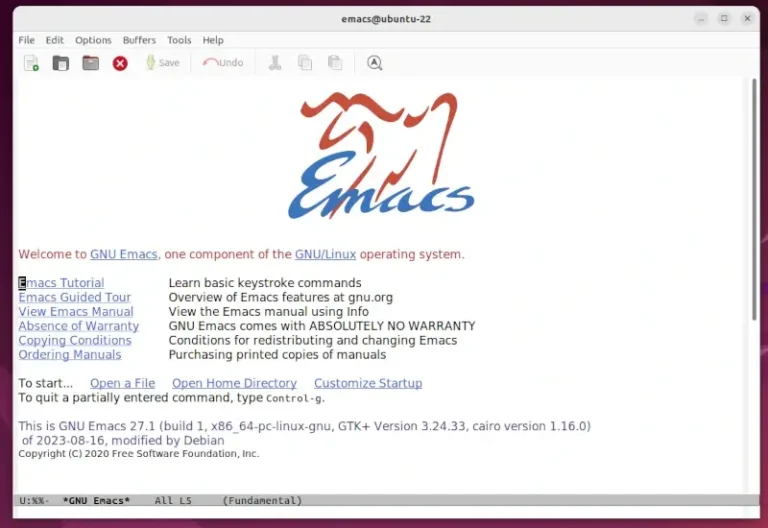In the world of Linux system administration and development, comparing files is an essential task when you are updating configuration files, reviewing code changes, or troubleshooting issues, the ability to compare two text files and quickly spot the differences can save you time and help you avoid costly errors.
In this guide, we’ll walk you through various methods to compare text files in Linux, from basic command-line tools to advanced visual diff tools. Each method has its own strengths, and we’ll explain when to use which one.
A Quick Scenario
Imagine you have two versions of a config file:
file1.txt– an older versionfile2.txt– a newer version
Your goal is to identify what’s changed.
1: Using the diff Command
The diff command is a classic and powerful tool available on every Linux system that compares two files line by line and prints the differences.
diff file1.txt file2.txt
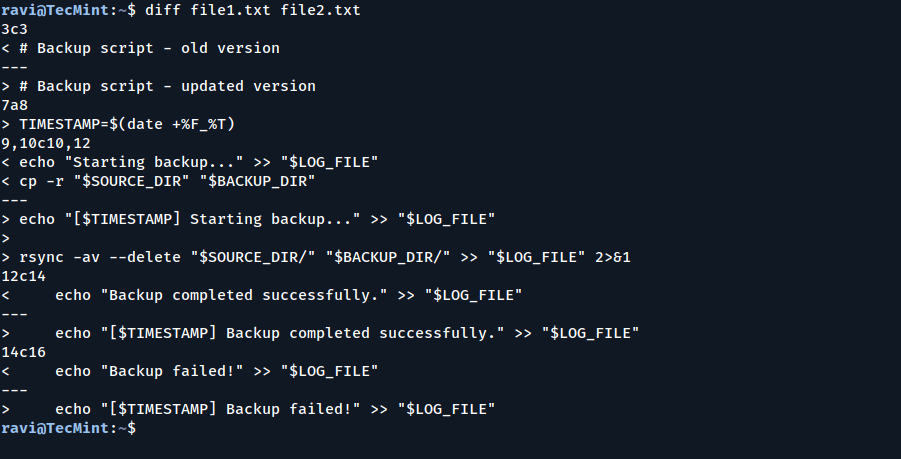
To make the output easier to read, you can use the following command, which will displays both files in two columns – left and right – so you can easily scan differences.
diff -y file1.txt file2.txt
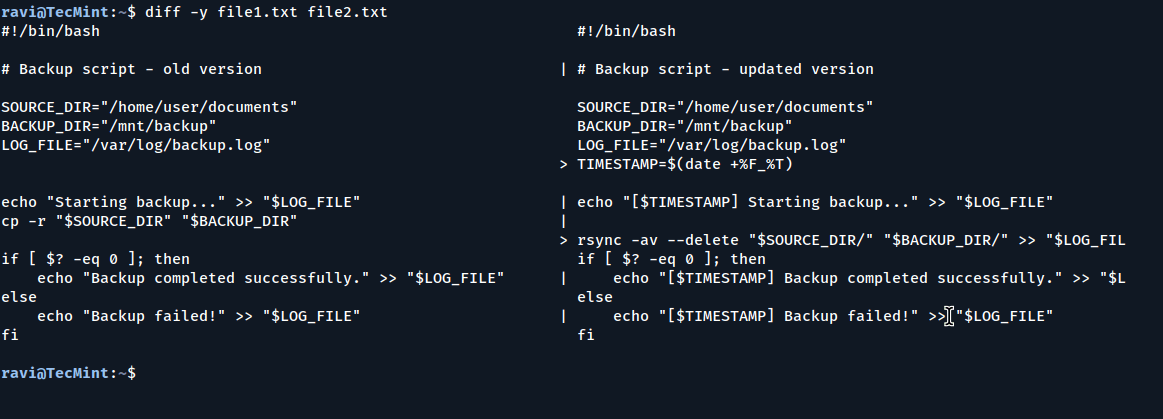
If you want to display only the differences between two files while hiding identical lines, use the following command:
diff -y --suppress-common-lines file1.txt file2.txt

2: Using colordiff for Color Output
The colordiff tool is a user-friendly wrapper around diff that enhances terminal output by adding color, making differences more visually distinct.
To install colordiff on Linux, use the following appropriate command for your specific Linux distribution.
sudo apt install colordiff [On Debian, Ubuntu and Mint] sudo dnf install colordiff [On RHEL/CentOS/Fedora and Rocky/AlmaLinux] sudo emerge -a sys-apps/colordiff [On Gentoo Linux] sudo apk add colordiff [On Alpine Linux] sudo pacman -S colordiff [On Arch Linux] sudo zypper install colordiff [On OpenSUSE] sudo pkg install colordiff [On FreeBSD]
Run colordiff to compare two files line by line:
colordiff file1.txt file2.txt
Each modification will be highlighted, allowing you to quickly identify differences, whether it’s a true vs. false, a missing comma, or any subtle change in text.
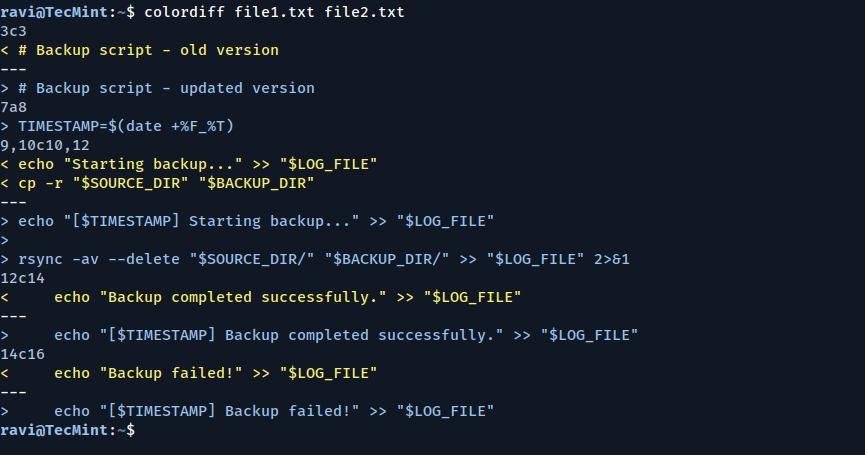
3: Comparing Files Visually with vimdiff
For users familiar with Vim, vimdiff is a powerful tool that provides a side-by-side comparison of two files, highlighting differences with colors and markers.
To install Vim on Linux, use the following appropriate command for your specific Linux distribution.
sudo apt install vim [On Debian, Ubuntu and Mint] sudo dnf install vim [On RHEL/CentOS/Fedora and Rocky/AlmaLinux] sudo emerge -a sys-apps/vim [On Gentoo Linux] sudo apk add vim [On Alpine Linux] sudo pacman -S vim [On Arch Linux] sudo zypper install vim [On OpenSUSE] sudo pkg install vim [On FreeBSD]
Run the following command to open two files side by side in the Vim editor:
vimdiff file1.txt file2.txt

Once inside vimdiff, differences between the files will be highlighted, and you can navigate between changes using:
]c→ Jump to the next difference.[c→ Jump to the previous difference.
4: Byte-by-Byte Comparison with cmp
If you need to identify the exact byte where two files differ rather than just line-by-line differences, the cmp command is the ideal tool.
cmp file1.txt file2.txt
Sample Output:
file1.txt file2.txt differ: byte 32, line 3
Interpretation:
- Byte 32: The position where the first difference is detected.
- Line 3: The corresponding line number in the file.
This method is particularly useful when comparing binary files or detecting minor character differences in text files.
5: Graphical File Comparison Using Meld
For users who prefer a graphical interface, Meld provides an intuitive and user-friendly visual diff and merge tool, which is particularly useful for comparing code, configuration files, and scripts with a side-by-side view.
To install Meld on Linux, use the following appropriate command for your specific Linux distribution.
sudo apt install meld [On Debian, Ubuntu and Mint] sudo dnf install meld [On RHEL/CentOS/Fedora and Rocky/AlmaLinux] sudo emerge -a sys-apps/meld [On Gentoo Linux] sudo apk add meld [On Alpine Linux] sudo pacman -S meld [On Arch Linux] sudo zypper install meld [On OpenSUSE] sudo pkg install meld [On FreeBSD]
To compare two files, run:
meld file1.txt file2.txt
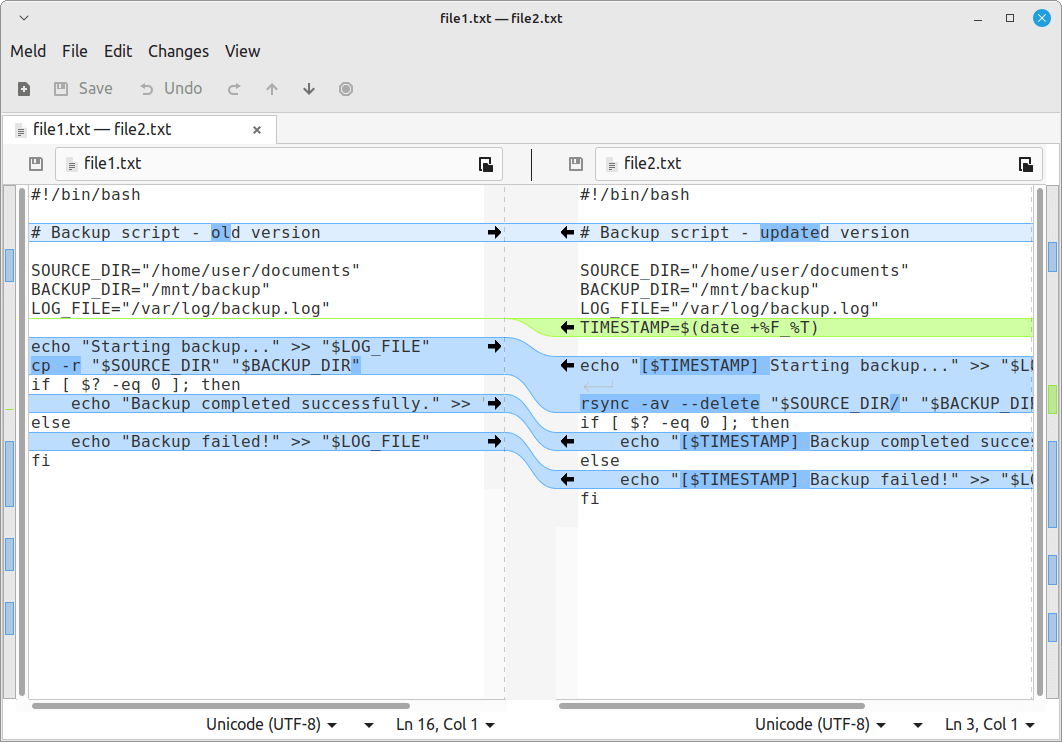
Final Thoughts
Comparing files is one of those tasks that seems simple, until you’re dealing with large config files, complex scripts, or subtle differences that break your system.
Linux gives you the flexibility to:
- Do quick terminal comparisons using
difforcolordiff. - Open full-blown visual comparisons with
vimdifformeld. - Dig deep into byte-level changes with
cmp.
Have a favorite file comparison tool? Or do you use a custom script or alias to simplify the process? Let us know in the comments or reach out, we’re always eager to learn from our readers!

